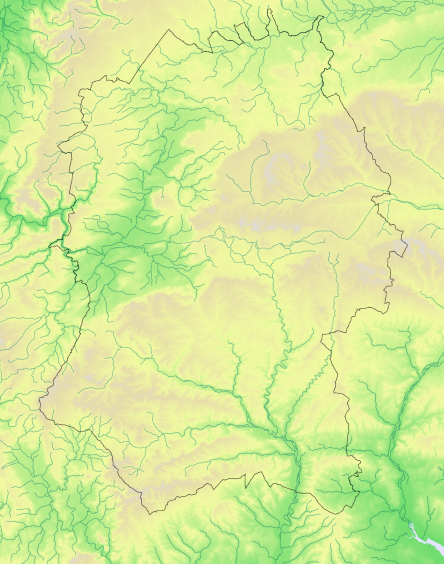Kingfisher Alcedo atthis
Winter distribution 1995–2000
Scarce and local breeding resident, more widespread in autumn/ winter
Atlas species lists
- Breeding distribution 1995–2000
- Summer abundance 1995–2000
- Winter distribution 1995–2000
- Winter abundance 1995–2000
- Breeding distribution 2007–2012
- Summer abundance 2007–2012
- Winter distribution 2007–2012
- Winter abundance 2007–2012
- Breeding distribution change
- Summer abundance change
- Winter distribution change
- Winter abundance change
More Kingfisher maps
- Breeding distribution 1995–2000
- Summer abundance 1995–2000
- Winter distribution 1995–2000
- Winter abundance 1995–2000
- Breeding distribution 2007–2012
- Summer abundance 2007–2012
- Winter distribution 2007–2012
- Winter abundance 2007–2012
- Breeding distribution change
- Summer abundance change
- Winter distribution change
- Winter abundance change
More maps for this atlas
Map explanation
This map shows the winter distribution of the species in Wiltshire as revealed by the fieldwork for Birds of Wiltshire (Wiltshire Ornithological Society 2007).
Key
Status
Nos tetrads

Present
22
5%

Not surveyed
The Common Kingfisher, Alcedo atthis, is the only one of the 93 members of the worldwide alcedinidae family that is resident in Europe. As well as much of Europe, its fragmented range includes North Africa, and parts of central, southern, southeastern and east Asia. In some northern parts of their range they migrate to southern regions in winter, but mostly they are non-migratory.
In Britain they are found in all regions except the north of Scotland. There is some dispersal away from the breeding sites at the end of the breeding season, which accounts for the fact that they are found in more places in winter than in summer. They are susceptible to cold and wet and their numbers can fall dramatically in harsh winters such as 1962-3. But they can also recover rapidly, with as many as three broods, each of up to six eggs, in a single season. Overall, the population appears to be stable with the main feature being a distinct northwards extension, presumably driven by climate change.
InWiltshire, Kingfishers breed along all the main water courses and at the major lakes. In Birds of Wiltshire they were recorded in summer in 132 tetrads, with breeding probable or confirmed in 36 of them. In WTA2 they were recorded breeding in 44 out of the 141 tetrads where they were seen.
References
The following references are used throughout these species accounts, in the abbreviated form given in quotation marks:
“1968-72 Breeding Atlas” – Sharrack, J.T.R. 1976: The Atlas of Breeding Birds in Britain and Ireland. T. & A. Poyser
“1981-84 Winter Atlas” – Lack, P.C. 1986: The Atlas of Wintering Birds in Britain and Ireland. T. & A. Poyser
“1988-91 Breeding Atlas” – Gibbons, D.W., Reid, J.B. & Chapman, R.A. 1993: The New Atlas of Breeding Birds in Britain and Ireland 1988-91. T. & A. Poyser
“Birds of Wiltshire” – Ferguson-Lees, I.J. et al. 2007 : Birds of Wiltshire, published by the tetrad atlas group of the Wiltshire Ornithological Society after mapping fieldwork 1995-2000. Wiltshire Ornithological Society.
“Bird Atlas 2007-2011” – Balmer, D.E., Gillings, S., Caffrey, B.J., Swann, R.L., Downie, I.S. and Fuller, R.J. 2013: Bird Atlas 2007-2011: the Breeding and Wintering Birds of Britain and Ireland
“WTA2” – ("Wiltshire Tetrad Atlas 2 ") the present electronic publication, bringing together the Wiltshire data from “Birds of Wiltshire” and “Bird Atlas 2007-11”, together with data from further fieldwork carried out in 2011 and 2012.
"Hobby" - the annual bird report of the Wiltshire Ornithological Society.

